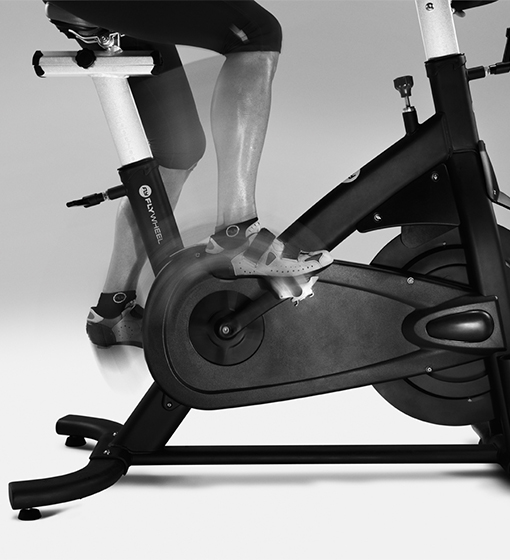Does Cycling Make Your Thighs Bulky?
Popularity often comes with skeptics. So, while indoor cycling is praised by many, including celebrities, it also has its haters. One of its strongest critics is celebrity workout maven Tracy Anderson who says, “Spin may burn calories in the short term, but if that's all you're doing, it'll bulk up your thighs. I have women who come into my office after spinning exclusively for six months, wondering why they can’t fit into their jeans.”
If that’s true, then why do so many flock to it? Is it really an intensely sweaty, often club-like workout that gives you bulky thighs and broken fitness dreams?
According to Cycle House instructor Maranda Barskey, this is one of her favorite cycling myths to debunk. “Cycling regularly, the way we do in a spin class, will not bulk up your thighs! If that were the case, mine would be the size of California and last I checked, they’re not. This misconception is actually the result of a more general misunderstanding about our bodies and what happens when we workout. I don’t think most people understand just how hard it is for bodybuilders, for example, to bulk up and maintain that level of muscle mass. We are talking about a serious commitment to a serious diet and serious workout regime that the casual cycler is not [typically] adhering to.”
And the reason participants might experience bulky thighs likely has nothing to do with cycling itself.
“When you are using your muscles, you are technically tearing the muscle fibers, which will create a feeling of ‘puff’ and then as the muscle heals itself it condenses giving you muscle tone. So with a consistent workout routine we are repeatedly tearing the muscle fiber and letting it heal, tearing and letting it heal. Over time this will lead to the nice tight thighs, arms, [butt] and abs of your dreams!”
To get the most from your workout, make sure you have the correct posture. “Proper form is key in indoor cycling as it will allow your muscles to work efficiently and safely, while creating long, lean muscles,” says Flywheel master instructor Aleah Stander. “When you are standing next to the bike, the seat height should be level with the Iliac crest–the top most component of your hip bone. This is [about] three to four inches higher than where you would place your hand on your hip. This will allow your legs to lengthen at the bottom of the pedal stroke, creating long lean muscles in the legs. If the seat can be adjusted forward, place it so the knee is over the ball of the foot when at the front of the pedal stroke. Handlebars should be kept at a height that allows you to comfortably relax your shoulders and elongate your spine in the neutral position. This will engage your core for the entire ride.”
If you still feel like cycling contributes to your pals “Thunder” and “Lightning”, it might be time to look at your diet instead. A 45-minute cycling class doesn’t give you a license to pig out (although we wish it did). “Bulking up will always come from diet and food,” says celebrity trainer Alicia Strom. “If someone says ‘I’m bulking up from cycling’ [it’s] actually [because they’re] overeating [or drinking].” That doesn’t mean you should skip a meal either. Barksey says that not eating can be just as the opposite. At the end of the day, it’s all about balance.
And while you’re at it, it’s just as important to stay hydrated to prevent overeating. “People often confuse dehydration with hunger,” says Stander. “The sweat produced in any intense cardio workout will make you feel hungrier unless you hydrate before, during, and after class.”









